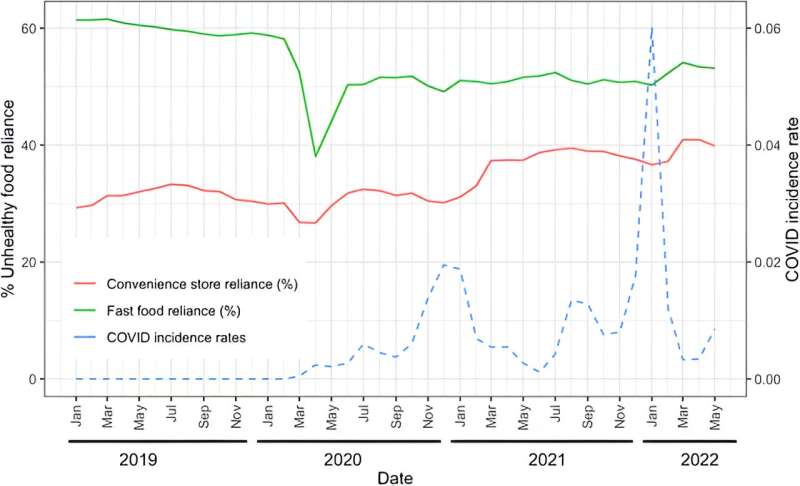This article has been reviewed according to Science X's editorial process and policies. Editors have highlighted the following attributes while ensuring the content's credibility:
fact-checked
proofread
Mobile phone study sheds light on unhealthy food consumption disparities during COVID-19

A study published in Health Data Science, reveals critical insights into socioeconomic disparities in unhealthy food reliance using novel mobile phone data analysis. This study, led by researchers Charles Alba and Ruopeng An from Washington University in St. Louis, marks a significant departure from traditional survey-centric approaches, offering a more dynamic nationwide perspective.
Alba, a doctoral student, notes, "Our analysis, utilizing mobile phone data, provides a unique lens to understand existing disparities in unhealthy food consumption, particularly among racial minorities and low-income households."
The study's innovative methodology differs from conventional surveys, capturing real-time data across a vast geographical scope. An, Associate Professor at Washington University, emphasizes the study's contribution to a broader understanding of COVID-19's impact on these disparities. "Our work extends beyond static information, offering a comprehensive understanding of how the pandemic has intensified unhealthy food reliance, especially among socio-economically vulnerable communities," says An.
In analyzing over 800,000 establishments across 3,141 U.S. counties, the researchers uncovered that COVID-19 has exacerbated convenience store reliance, particularly in Hispanic-majority counties and areas with older populations. This trend highlights increasing disparities in both convenience stores and fast-food dependence.
The study's unique contribution lies in its threefold approach: leveraging mobile phone data to address built environment inequities, bridging the gap in understanding COVID-19's impact on socioeconomic disparities, and providing a national-level analysis, a significant extension from the typical local or state-level focus in existing literature.
Alba says, "Our findings underscore the need for resilient and equitable food environments in the post-pandemic era. We aim to inform policy stakeholders about these critical disparities and foster more equitable food access for all."
More information: Charles Alba et al, Using Mobile Phone Data to Assess Socio-Economic Disparities in Unhealthy Food Reliance during the COVID-19 Pandemic, Health Data Science (2023). DOI: 10.34133/hds.0101





















